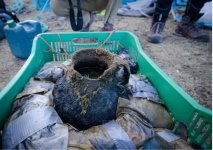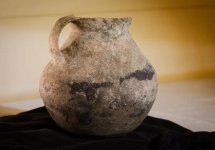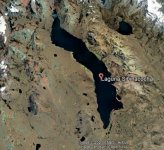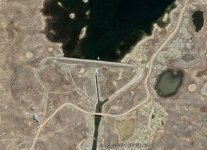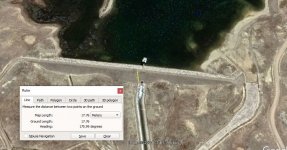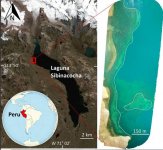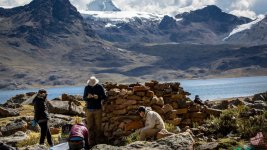Crow
Silver Member
- Jan 28, 2005
- 3,723
- 10,355
- Detector(s) used
- ONES THAT GO BEEP! :-)
- Primary Interest:
- Other
Gidday Amigos
I just watched a documentary called the lost The lost Inca temple of of Ausangate.
The Inca Empire was a beacon of civilization in the Andes Mountains of South America. Its people had a spiritual relationship to the landscape, worshiping mountains and lakes as gods. After the empire collapsed, its legacy survived in the rarified air of the high mountains.
Prolific archeologist Johan Reinhard searched high and low to solve the mysteries of this lost empire. Among his greatest accomplishments was the recovery of three perfectly preserved mummies from the highest archeological site in the world.
But one of the Inca's most important temples evaded him: the lost temple of Ausangate.
In 2011, environmental scientist Preston Sowell discovered ruins and artifacts submerged in Lake Sibinacocha, sixteen thousand feet above sea level, at the headwaters of the Amazon River in Peru.
Sowell believes that the ruins within and around the lake could be part of Reinhard's lost temple, one of the Inca’s most significant ceremonial sites. Subsequently, two high-altitude scuba divers on Sowell’s team went deeper into the lake to explore further, and one was tragically killed. In the wake of this tragedy, Sowell developed a profound obligation to understand and protect the site and its fragile ecosystem.
Despite the high altitude and harsh conditions, Sowell has found wildlife thriving at Lake Sibinacocha, some well above previously known altitudes. In 2017, he even documented the Andean mountain cat in the watershed, the rarest and most endangered cat in the Americas. Sadly, Sibinacocha and its wildlife are under threat from mineral exploitation.
Lost Temple of the Inca, directed by Jim Aikman, follows Sowell's work with a team of archaeologists attempting to reveal the significance of the site, and his personal quest to protect this sacred place and understand the profound impact it has had on his life.
That was the sell ....of the documentary created for national geographic and Disney
While I found the topic interesting the presentation was extremely poor with Confirmation Bias with climate based agenda.
Many of the conclusions was outright assumptions and would be an embarrassment to the scientific community. Some of their conclusions was so poor they could be almost said it was environmental protection propaganda.
What has happened to quality research?
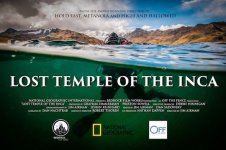
Crow
I just watched a documentary called the lost The lost Inca temple of of Ausangate.
The Inca Empire was a beacon of civilization in the Andes Mountains of South America. Its people had a spiritual relationship to the landscape, worshiping mountains and lakes as gods. After the empire collapsed, its legacy survived in the rarified air of the high mountains.
Prolific archeologist Johan Reinhard searched high and low to solve the mysteries of this lost empire. Among his greatest accomplishments was the recovery of three perfectly preserved mummies from the highest archeological site in the world.
But one of the Inca's most important temples evaded him: the lost temple of Ausangate.
In 2011, environmental scientist Preston Sowell discovered ruins and artifacts submerged in Lake Sibinacocha, sixteen thousand feet above sea level, at the headwaters of the Amazon River in Peru.
Sowell believes that the ruins within and around the lake could be part of Reinhard's lost temple, one of the Inca’s most significant ceremonial sites. Subsequently, two high-altitude scuba divers on Sowell’s team went deeper into the lake to explore further, and one was tragically killed. In the wake of this tragedy, Sowell developed a profound obligation to understand and protect the site and its fragile ecosystem.
Despite the high altitude and harsh conditions, Sowell has found wildlife thriving at Lake Sibinacocha, some well above previously known altitudes. In 2017, he even documented the Andean mountain cat in the watershed, the rarest and most endangered cat in the Americas. Sadly, Sibinacocha and its wildlife are under threat from mineral exploitation.
Lost Temple of the Inca, directed by Jim Aikman, follows Sowell's work with a team of archaeologists attempting to reveal the significance of the site, and his personal quest to protect this sacred place and understand the profound impact it has had on his life.
That was the sell ....of the documentary created for national geographic and Disney
While I found the topic interesting the presentation was extremely poor with Confirmation Bias with climate based agenda.
Many of the conclusions was outright assumptions and would be an embarrassment to the scientific community. Some of their conclusions was so poor they could be almost said it was environmental protection propaganda.
What has happened to quality research?

Crow


